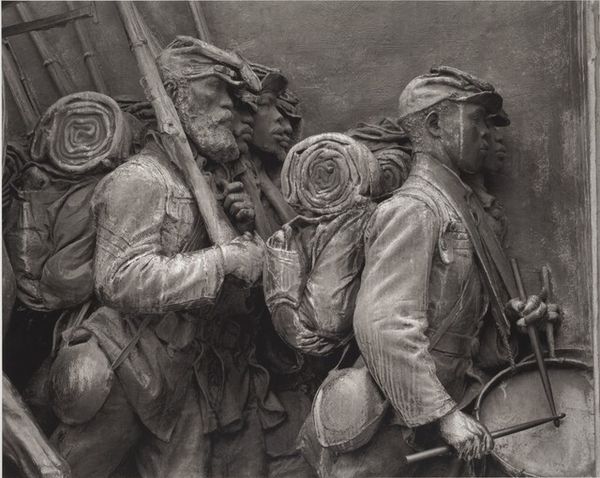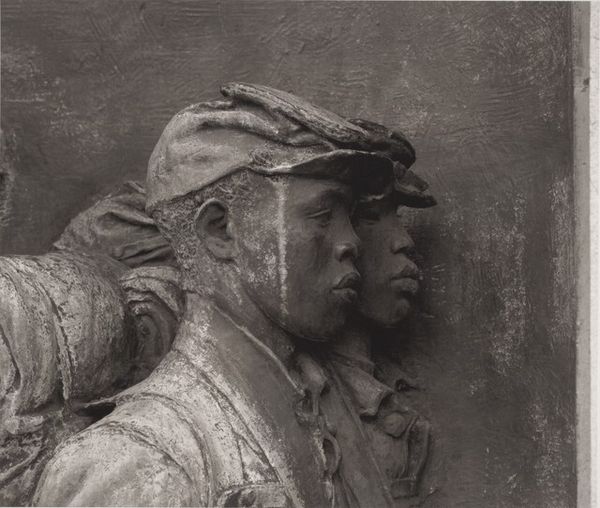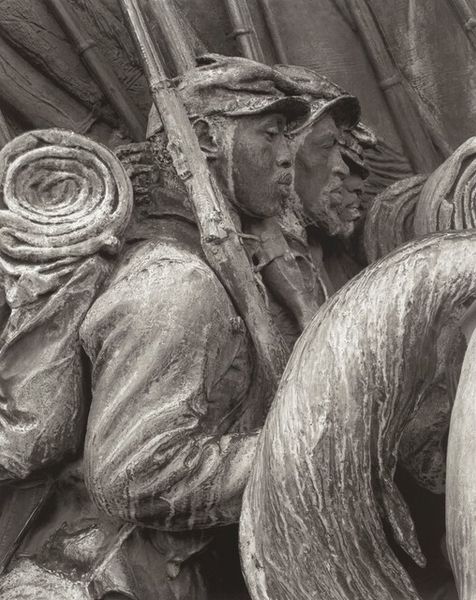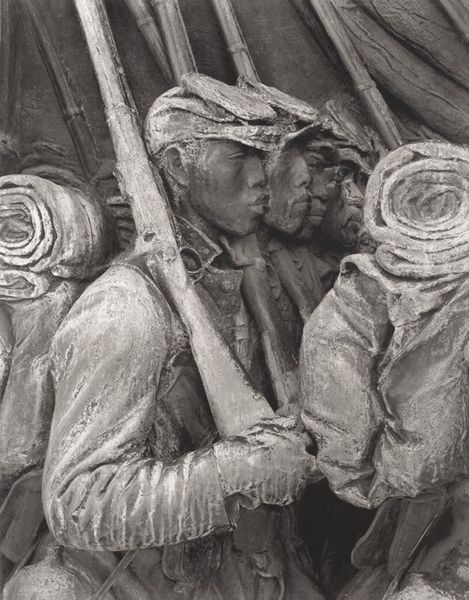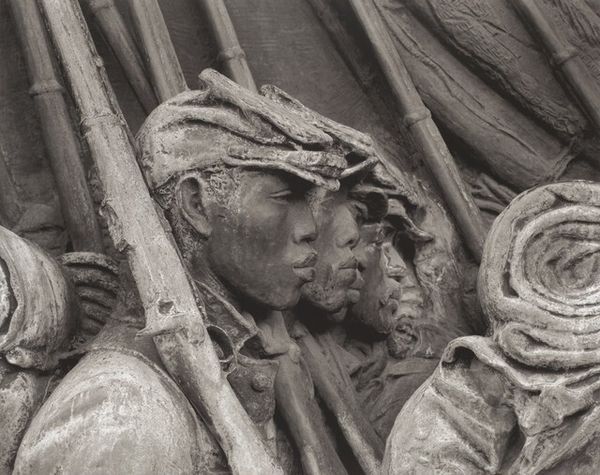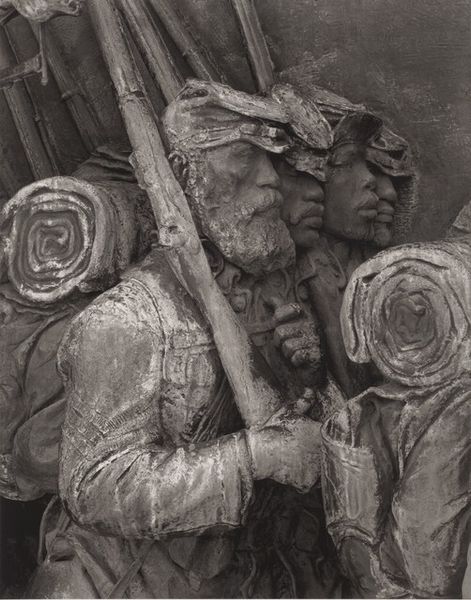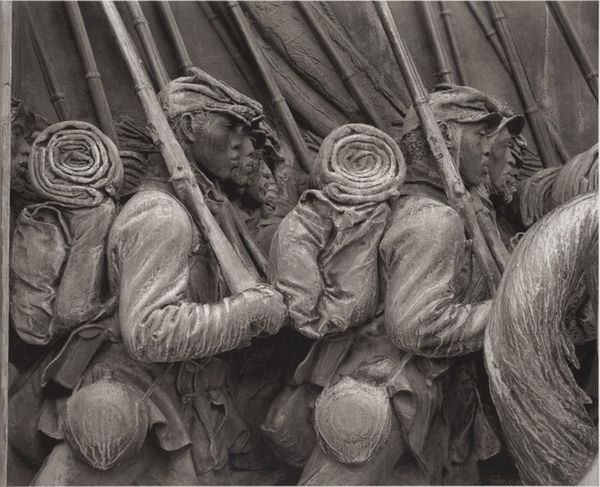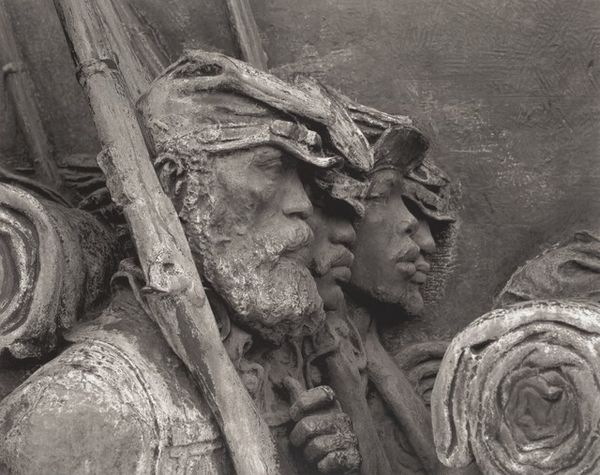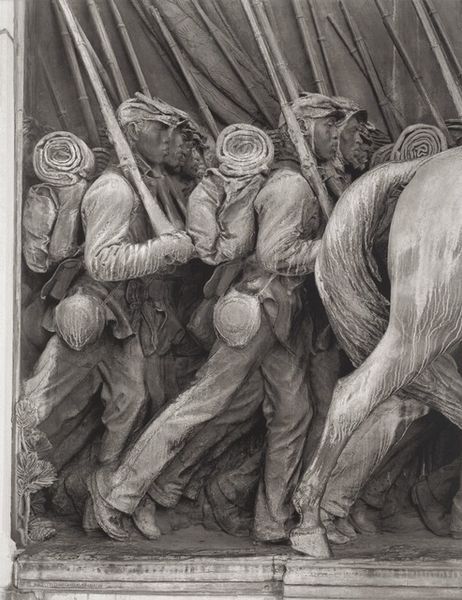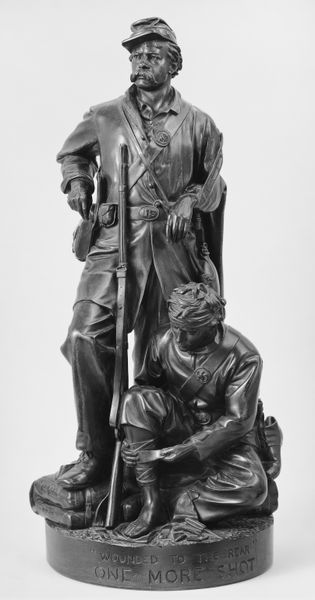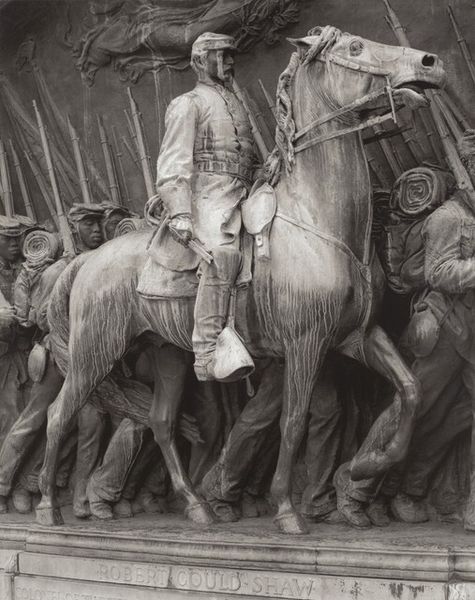
bronze, sculpture
#
portrait
#
sculpture
#
bronze
#
figuration
#
sculpture
#
history-painting
Dimensions: image: 33.2 x 26 cm (13 1/16 x 10 1/4 in.) sheet: 45.5 x 32.9 cm (17 15/16 x 12 15/16 in.)
Copyright: National Gallery of Art: CC0 1.0
Curator: We’re looking at Richard Benson’s photograph of the "Robert Gould Shaw Memorial," a bronze relief sculpture. While the memorial itself dates back to 1897, Benson's photographs of it were made between 1973 and 2008. What strikes you first about this image? Editor: It's somber, deeply so. The monochrome amplifies the serious expressions and determined gaze of the figures, doesn’t it? And the way the light catches the bronze creates a real sense of weight and presence. It feels monumentally important, somehow. Curator: Indeed. The sculpture commemorates Colonel Robert Gould Shaw, a white officer, and the 54th Massachusetts Infantry, one of the first African-American regiments to fight in the Civil War. It stands in Boston Common, a constant reminder of the complexities of that era. Editor: It is impossible to think about this war without a deep analysis about class, race, and gender. I am very interested to learn what the men of the 54th thought when this statue, of Shaw and them, was initially dedicated. Who do you think they envisioned this sculpture addressing in the years and decades after it was unveiled? Curator: That's a vital point. On the one hand, it was intended to honor their bravery and service in the face of immense prejudice. At the same time, it has sparked debate about representation and who controls the narrative of history. You'll see that the Shaw figure is placed slightly ahead of the regiment, physically setting apart a white, abolitionist figure and suggesting leadership as inherently linked to this separation. Editor: That division in representation is so very common when the art deals with difficult racial realities! I think of it as a visual vocabulary that is as fraught as the racist realities being depicted, though not as openly insidious. Is the photograph actively attempting to correct the initial symbolism? It feels less interested in perpetuating the legacy of segregation through sculpture. Curator: That’s a thought-provoking interpretation. Benson’s sharp focus allows us to see the individual faces in great detail. Editor: A good perspective; I think Benson provides a vital opportunity for visitors to connect with individual narratives contained in the group portrait, as the medium flattens but still leaves dimension to understand each other in complicated relation.
Comments
No comments
Be the first to comment and join the conversation on the ultimate creative platform.
